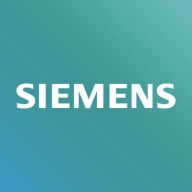

OpenText ALM Octane and Polarion ALM are competitive solutions in the ALM space. ALM Octane holds an edge with its agile-focused capabilities and integration flexibility, making it preferable in agile environments.
Features: ALM Octane offers comprehensive integrations with agile management, backlog management, and real-time analytics, supporting multiple tools and methodologies. Its compatibility with the SAFe framework enhances agile deliveries. Polarion ALM provides strong requirements management, traceability, and document control capabilities, making it suitable for regulated environments. Its seamless cross-department utilization without plugins adds value in organizations.
Room for Improvement: ALM Octane users see a need for more flexible reporting, better integration with external tools, and improved handling of complex organizational structures. Enhancements in mobile testing processes and reporting features are also desired. Polarion ALM requires improvements in user experience, planning features, and third-party tool integration, which often involves extensive configuration.
Ease of Deployment and Customer Service: ALM Octane is mainly deployed on-premises but offers private and hybrid cloud options, with praise for its technical support and custom query capabilities. Polarion ALM supports versatile deployment with additional public cloud options. It is known for responsive support, but configuration complexity can be challenging.
Pricing and ROI: Both ALM solutions are seen as expensive, yet they offer significant functionality. ALM Octane is considered cost-effective for agile scenarios due to included features that eliminate the need for additional plugins. Polarion ALM's pricing is market-aligned but necessitates extra licensing for more features, affecting cost-effectiveness. Both promise improved efficiency and integration, suggesting potential ROI with proper use.


OpenText ALM Octane helps organizations implement a “quality everywhere” approach and improve Agile and DevOps development and testing processes to improve the flow of work across the software delivery value stream. You can tightly align quality efforts from development to release, employ a broad range of tests anchored by automation, and continuously monitor and improve for increased throughput. OpenText fosters an open approach so that quality is visible, traceable, and continuously improved. By synchronizing quality and testing with Agile and DevOps processes, risks are mitigated early in the software delivery value stream – speeding the way for faster delivery and improved customer satisfaction.
ALM Octane facilitates a tailored and scalable approach for large enterprises. You can deploy your way and minimize infrastructure needs with deployment options spanning on-premises, SaaS, and public cloud (Amazon Web Services and Microsoft Azure Marketplaces). Similarly, various licensing options can tailor the features to meet specific needs with support for thousands of concurrent users in geographically disperse locations.
The world’s first 100% browser-based ALM enterprise solution, which enables seamless collaboration across disparate teams, multi-directionally linked work items, full traceability, accelerated productivity and automated proof of compliance.
We monitor all Application Lifecycle Management (ALM) Suites reviews to prevent fraudulent reviews and keep review quality high. We do not post reviews by company employees or direct competitors. We validate each review for authenticity via cross-reference with LinkedIn, and personal follow-up with the reviewer when necessary.